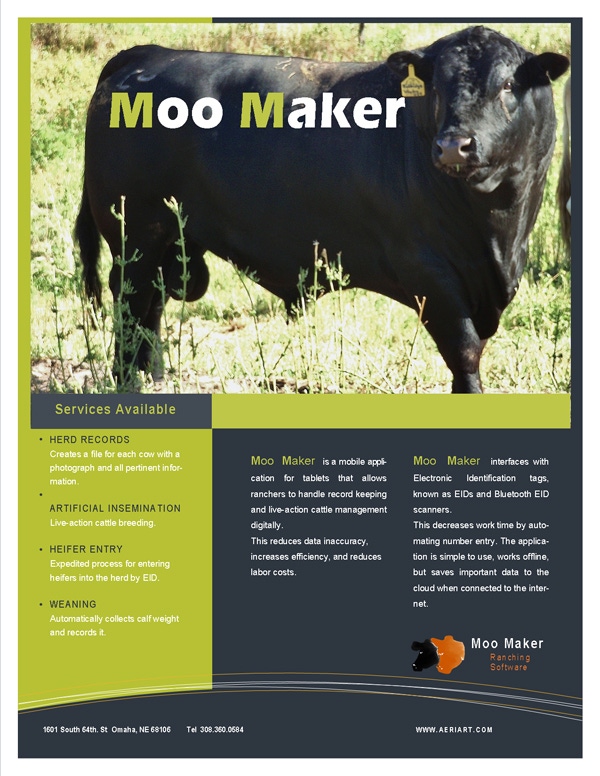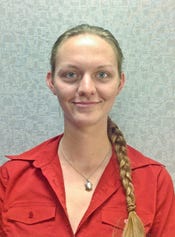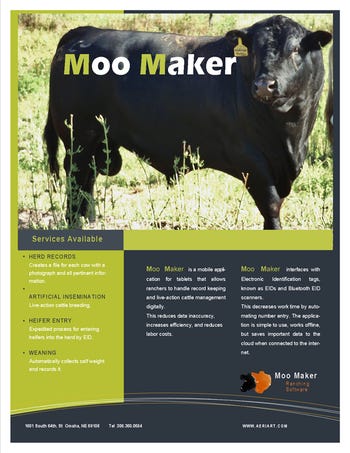Computer innovation and common sense imbued by a ranch upbringing lead to a college student’s new cattle breeding program.

If necessity is the mother of invention, where does aggravation fit?
For Rachel Ostrander, the aggravation factor provided the necessity, which in turn led to the invention of a new computer program, still under development, that helps cattle breeders better keep the avalanche of artificial insemination (AI) data organized and more useful.
Ostrander is a junior at the University of Nebraska-Omaha majoring in information technology innovation. She’s a ranch girl from Rushville, NE, and was helping Art and Merry Brownlee of the JHL Ranch at Ashby, NE, inseminate cows last summer when the seed of the idea was planted in her brain.

Rachel Ostrander
“They have a unique setup for doing AI,” she says, which involves an Excel spreadsheet and electronic ID (EID) tags. When a cow enters the breeding chute, her EID tag is scanned and the Excel spreadsheet comes up on the screen. “But because it’s in Excel, information would get into the wrong cells,” she says. “Cows kept getting misread and we would have to rescan everything.”
So, as a class project last spring, Ostrander developed a data program that is simpler and more intuitive to use.
It’s currently a mobile application for an iPad, she says, but eventually it also will be available for Android products.
“Right now, it allows you to set up a database of your cattle within the app. You can use the tablet to take a picture of the cow, and then list as much information about her as you want. You have a file for each cow and for each bull, and can specify the matings,” she says.
When a cow enters the breeding chute, a Bluetooth scanner automatically pulls up the file and lets the breeder know which bull to breed her to. “There’s no way to mis-scan something because there’s nowhere else for the scanner to go, unlike in Excel, where the columns can get mixed up,” she says.
At present, the rancher has to enter all the cows into the system. “You can hand-enter the information, which is not ideal, or you can run through your cattle at preg-checking time and scan them,” she says. Eventually, the program will be upgraded to allow users to import data from an Excel spreadsheet.
Future plans
Ostrander plans many other upgrades in the future as well, she says. These include more extensive recordkeeping and retrieval capabilities, and the ability to export the data so they can be displayed and printed as charts and graphs.

University of Nebraska-Omaha student Rachel Ostrander developed a chute-side system that helps organize artificial insemination data. In the early planning stages, the brochure at left explains the project.
“And then, eventually, I’m going to look into predictive analysis, basically a suggestion of what bull you should breed the cow to, based on what traits you value,” Ostrander says.
As a college junior this fall, she’ll have time to refine the program. Every student has to take a “capstone” course, which is a year-long project each student must complete to graduate. Working full time on the program for the next two years will enable her to refine and improve it.
The program in its current state came together in just a couple of months as a class project. “We started in December and had it functional, at least in the recordkeeping sense, by the middle of May,” Ostrander says.
But in that short time, her product impressed a lot of people. She developed a business plan, which she entered in the University of Nebraska-Lincoln (UNL) Maverick Business Plan competition and then won. Then she entered the software in the UNL undergraduate capstone competition, and won that as well.
That exposure led to an offer from a venture capital company to invest in the product. While that’s heady stuff for a college student, she exhibits the levelheadedness that characterizes ranch kids.
“They had the expectation that I would quit school,” she says, and they wanted a larger chunk of equity than she was willing to give up. “That’s not where I want to go with it yet. I want to finish my degree before I pursue this full time.”
You might also like:
Why Spaying Beef Heifers Makes Sense
10 Best Photos Featuring Generations On The Ranch
Meet the BEEF 50: 50 Top Industry Leaders
About the Author(s)
You May Also Like



